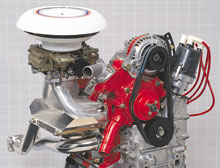Ignition Systems

RX-7 Ignition Systems
There are few areas on an automobile that are as subject to misinformation and misunderstanding as the ignition - largely because there are so many choices available. Another reason is that, in spite of many manufacturers’ best intentions, ignition systems seem to fail much too often.
To begin, we should establish that the stock ignition system on most rotaries is reasonably good. The biggest fault with all rotaries before 1980 is that the ignition points in the system require constant maintenance: beginning in 1980, Mazda introduced a breakerless distributor eliminating this problem.
There are two general types of ignition systems: "coil storage" (reactor) systems that build up a magnetic field in a coil, then discharge it as high voltage across the spark plugs, and "capacitative discharge" (transformer) systems that build up a charge on a capacitor, then discharge the capacitor through a coiI (transformer) that induces a large voltage across the spark plug.
In general terms, "coil storage" systems are capable of less peak voltage than "capacitive discharge" systems, but have longer "sparking" (burn) time. Our tests have shown that both burn time and maximum voltage capability are important, so neither system is necessarily better.
There are two general types of ignition triggers: breaker points and "breakerless." "Breakerless" style ignition triggers include magnetic induction (Mazda 1980 and later), photoelectric, and "Hall Effect Cells." Any type of theses triggers can be designed to work with either type of ignition system.
Although a well-designed, point triggered coil storage ignition (stock on all Mazdas before 1980) will make almost as much power as the best ignitions available under optimal conditions, the fact that points deteriorate so quickly and that this style of ignition has little reserve energy capacity make it a poor choice for high performance or racing use.
As stated, Mazda began equipping their rotary engines with "breakerless" ignitions in 1980. With the 1980 model RX-7 the electronic components were located in a separate box, while the 1981-85 RX-7 models’ electronics were mounted on the distributor housing. Aside from simplifying the ignition, this change has eliminated a major problem we have seen in the earlier 1980 ignition system - a tendency to "cross trigger" between the leading and trailing ignitions.
Distributor Upgrades
If you wish to install the 1981-85 RX-7 breakerless distributor in a stock 1974-79 engine, there is one potential problem: the centrifugal and vacuum advance characteristics of this distributor are slightly different from the original equipment "breaker point" style distributors. The easiest way to deal with this is to set the timing to: Leading - 24° BTC / Trailing - 14° BTC at 5,000 RPM and use this as a starting point (vacuum disconnected). If you wish to use this distributor for racing purposes, the vacuum advance should not be used, and the timing should be set to the proper total advance setting (Timing Chart - PDF).
Supercharging/Turbo
Supercharged engines deserve special comment. In general, if you are just adding a small amount of boost (low restriction exhaust system), leave the timing at the stock settings. However, if you are porting the engine, running high boost and a large intercooler, or operating the engine at continuous high RPM, consider retarding the timing a bit. In our peripheral port turbo engines, we use 10° BTC total advance, leading and trailing, for dyno development and 12° BTC total advance for racing, after the engine management fuel mixture is well established. The timing is set at 6000rpm and leading and trailing plugs are fired simultaneously. The truth is that the power increase at 12° BTC is small and the danger is greater than at 10° BTC. Each increment in timing increases the risk for smaller and smaller gains in power
Copyright 2007-2024 Racing Beat, Inc ©
 Street Wire Sets
Street Wire Sets

